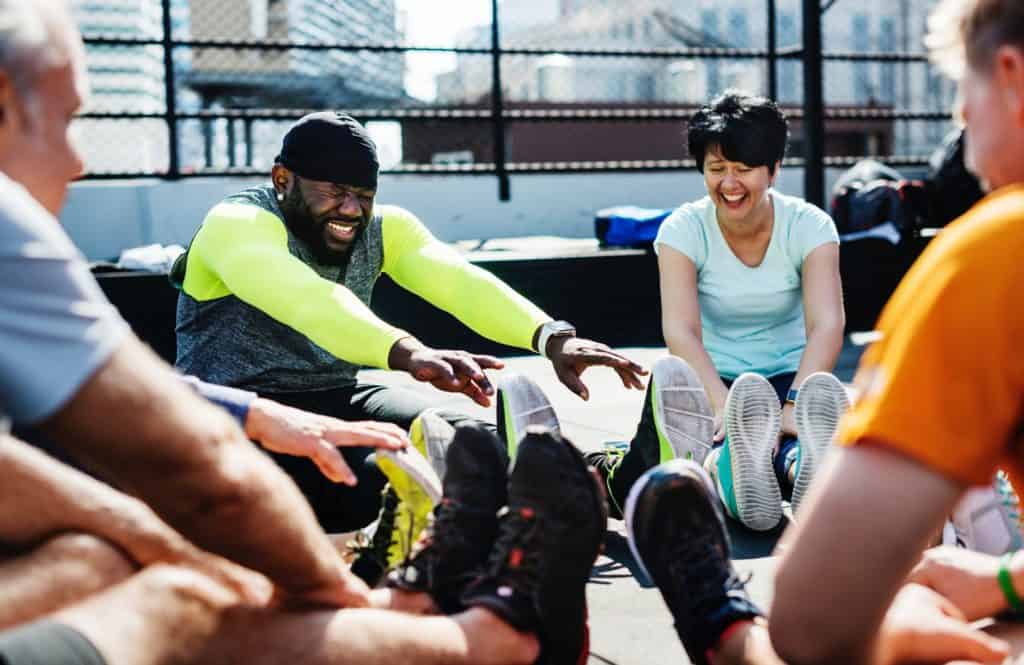Finding Tight Hip Flexors and Fixing Them
Depending on the state you live in, between 17 and 48% of American adults are inactive. If you’re one of these inactive adults trying to get into exercise, you might have noticed the problem of “tight hips”. You know what I’m talking about. They just won’t move like they used to, cramp up, or are just tender to the touch.
Tight hips or hip flexors are a common issue in adults. And this is a huge problem because the hip flexors assist with mobility and can cause issues from knee alignment to low back pain.
Keep reading to learn everything you need to know about identifying and correcting tight hip flexors!
What Are Hip Flexors?
Hip flexors are another name for the anterior hip musculature. These are the muscles in and around your hips, responsible for moving your legs and keeping your body aligned.
If these muscles become tight, they don’t keep the body aligned or allow for movement as easily. But not moving isn’t an option, so the body accommodates this in other ways. This usually means muscles that aren’t supposed to move as much, like the lower back or knees, end up overcompensating.
This overcompensation can lead to pain and even injury. To avoid pain and muscle stiffness, you need to keep your hip flexors strong, loose, and with a good range of flexibility.
How to Identify Tight Hip Flexors
If you think you might have hip flexor issues, there are a few self-tests you can do. Remember to be gentle – if you do have tight hip flexors, you don’t want to hurt yourself by forcing anything.
Misalignment When Standing
Tight hip flexors mean you’ve got problems with how your pelvis and the rest of your body are aligning. This results in your legs being misaligned when you’re standing upright.
Stand upright, and look at how your legs match up.
Your knees should be in line. If one knee seems to be turned inwards, and you’ve got an overpronation of the foot on the same leg, it means your pelvis is out of alignment.
Tenderness of Hip Flexors
A tight hip flexor is going to feel sensitive. Press into your hip flexors while you’re lying down, so they aren’t engaged.
If they feel tender or tense, they might be too tight.
Need some help?
Shape Success, Live Exceptionally
Hit that button, and get started today.
Ankle Rotation
Ankle rotation is also impacted by tight hip flexors. When lying flat on your back, let your feet relax while turned outwards.
Note if one foot seems to rotate further out than the other. This is a sign that something is misaligned.
Pinched Feeling
Lie flat on your back and lift your knee to your chest. If you feel a pinch in your hip muscles when you do this, it means they’re tight.
Do this test on each leg.
Popping and Clicking Noises
If you’re noticing popping and clicking noises when moving your legs, something is under strain.
Lie on your back and raise and lower your legs. Loose hip flexors won’t make noises or feel pops when you do this.
How to Loosen Your Hip Flexors
There are a few stretches you can do to help loosen your hips. Do them for a few minutes every day, and you should see an improvement soon:
- Half-kneeling hip flexor stretches
- Standing hip flexor stretches
- Couch stretches
- Standing quad stretches
- Half pigeons
Gentle walks every day are also good.
The key is to MOVE!
Get up and get loose, then stretch them out.
If you sit for hours a day they tend to get tight. Spend some time working to loosen them up. Your knees, back, feet, and the entirety of your body will thank you.
Loosening Your Hip Flexors
If you realize that you have tight hip flexors, don’t panic! Daily hip stretches and walks should loosen those hip flexors right up!
Let Us help You Out
At CONDITIONerd we are here to help you achieve better physical and mental health through exercise. Check out the plans we offer to our customers and see if you could benefit from working with our team. And if you have questions, you can always contact a CONDITIONerd team member.
Personal trainers, like those found here, can help guide you on your pathway towards reaching your fitness goals, whether that is getting bigger, stronger, faster, more lean, or just generally feeling better.
We can get you setup with a periodized workout plan, supplement information, and advice on nutrition to help you reach your goals.
The only thing you need is some motivation and a willingness to change some old habits.
Get into contact with us to find out what membership is right for you. In a CONDITIONerd program, you’ll be surrounded by others who can help you to get where you want to be.
Generally, our clients start to see some pretty awesome changes in 2-3 months time, some sooner.

